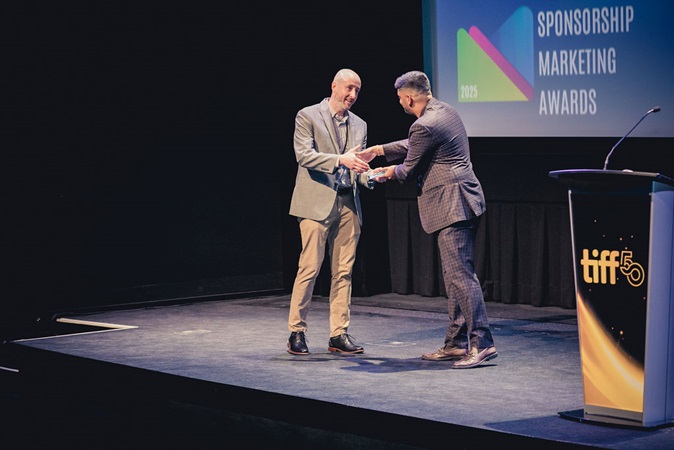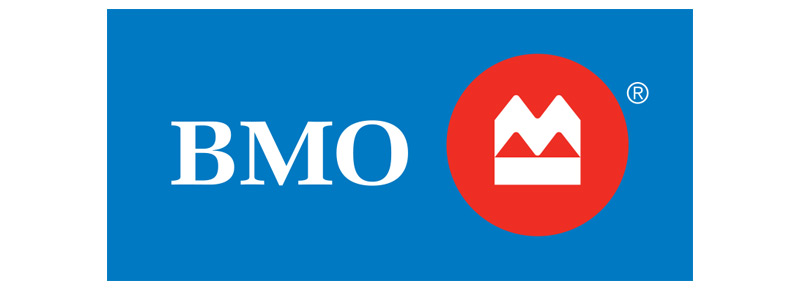Creating a Truth & Reconciliation Action Plan: A Scotiabank Case Study
Scotiabank’s Truth & Reconciliation Action Plan — a detailed list of measurable actions the Bank commits to make in order to re-establish trust with Indigenous Peoples — was a long time in the making.
It is the result of 18 months of planning, consultations with Indigenous rightsholders inside and outside of the Bank, focus groups with employees across the country, and much reflection. Taking the time and care to get it right was paramount, said Myan Marcen-Gaudaur, Director, Social Impact & Reconciliation at Scotiabank.
“This is transformational work,” said Marcen-Gaudaur, who is a citizen of the Métis Nation of Ontario. “Creating transformational change takes a lot of time and if it's rushed, it is likely to cause even more harm.”
The Bank’s Truth & Reconciliation Action Plan, released on Oct. 15, contains 37 commitments that are “consistent, meaningful and progressive actions to move us along the path to reconciliation,” said Scott Thomson, President and CEO of Scotiabank.
The commitments in the inaugural plan fall into six action pillars: Leadership & Governance, Education, Employment, Community, Client & Third Party, and Environment & Social Impact.
These range from a commitment to support Indigenous employees with specialized leadership training to build up the boardroom talent pool to increasing procurement from Indigenous suppliers.
The Action Plan and the commitments have been co-developed and informed by the experiences of Indigenous Peoples, and approached with thoughtfulness, respect and deliberate grounding in the insights of truth, Thomson added.
“We also recognize that reconciliation is a journey without an endpoint; it will continue to evolve. Our Action Plan forms a solid foundation by which we can grow,” he said.
Truth and Reconciliation Calls to Action
In 2015, the Truth and Reconciliation Commission of Canada, whose mandate was to inform all Canadians about the legacy of the in Residential School system in Canada, released its final report containing 94 calls to action. These calls to action were made to “redress the legacy of residential schools and advance the process of reconciliation.”Call to Action 92 was specific to businesses and corporate Canada, calling for economic reconciliation — which refers to the inclusion of Indigenous people, communities and businesses in all aspects of economic activity — and for the corporate sector to adopt the United Nations Declaration on the Rights of Indigenous Peoples (UNDRIP) as a reconciliation framework.
Scotiabank’s Action Plan is a response to this call to action, but differentiates itself with an added emphasis on truth, said Marcen-Gaudaur.“We've heard loud and clear from Indigenous leaders that there can't be reconciliation without truth. One of their big grievances is the fact that organizations rush to action without pausing to really think about, reflect on the truth. And that's a big misstep.”
As defined by the Truth and Reconciliation Commission of Canada, reconciliation is comprised of three parts; truth, acknowledgement and apology, and action, she added.
“This heightened responsibility to truth meant being very honest with ourselves and keeping truth central to our work every step of the way.”
Focus groups included Indigenous clients, non-profits and charities
The process to create the Action Plan began in 2023 with a thorough review of Scotiabank’s existing policies, practices and programs related to Indigenous relations. The Bank worked with Creative Fire, an Indigenous-owned consulting and communications firm, to do a detailed audit that began in June and lasted more than two months.
The audit’s findings helped to guide the next phase: detailed focus group sessions across the country, both internal and external.
“We wanted there to be a broad representation of voices, both internal and external and geographically diverse,” said Marcen-Gaudaur.
That included various Indigenous clients, non-profits and charitable organizations that work with ScotiaRISE — the Bank’s 10-year, $500-million commitment and social impact strategy — and employees from as many levels and business lines as possible, she added.
“We didn’t just want to talk to those who have experience with reconciliation or Indigenous inclusion,” Marcen-Gaudaur said. “It was just as informative to hear from those who had no idea what reconciliation was. Because that’s where we can advance the work the most – with the teams and individuals who don’t consider reconciliation as part of their job.”
The focus groups were held in person where possible, but some were held virtually. To provide a safe space to speak, the members of Scotiabank’s core Action Plan team were not present.
As well, sessions held specifically for Rightsholders (Indigenous Peoples) started and closed with a blessing by Elder Larry Frost, the Executive Director of the Native Canadian Centre of Toronto and a long-time Indigenous leader.
“Having an Elder present helped create a sense of security and safety,” said Marcen-Gaudaur. “That was really important if we were going to ask Indigenous Peoples to be really honest about topics that have caused, or continue to cause, a lot of harm. So, we were really sensitive to setting the right conditions to get those honest answers that we needed to advance this work.”

In all, there were more than 70 contributors, of whom more than half were Rightsholders, including Indigenous employees, clients, community members and representatives from various Nations.
After three months of focus groups, ending in early fall 2023, the team created an initial list of 89 commitments.
“It was the first glimpse of a road map and what was possible,” said Marcen-Gaudaur. “There was so much hope, while at the same time feeling like, ‘Oh my gosh, the work ahead is just so immense’. ”
Then, Scotiabank’s Truth & Reconciliation Action Plan working group — made up of employees working on social impact, Indigenous inclusion and other key parts of the Bank — reviewed and discussed each of the commitments in order to refine the list.
“We prioritized actions that were truly foundational, such as education,” said Marcen-Gaudaur. “Our mantra is Aware, Care, Act. If folks don’t know, they won’t care and if the don’t care, they won’t act.”
They also examined whether the Bank had the right governance or infrastructure in place that would enable the organization to commit and follow through.
“There were some that we really loved, but we had to be honest that we couldn’t do because it is extremely complex and requires a level of knowledge and understanding that we haven’t built yet.”
Some Action Plan commitments already underway
By early 2024, the Truth & Reconciliation team had narrowed the scope to the final list of 37 commitments under the six action pillars.
Each commitment has a timeline attached, indicating whether it’s ongoing, to be refreshed on a regular basis, or completed by a certain date. The responsibility for executing these commitments is spread across the Bank.
“It is important for this to be enterprise wide and detailed. It needs to be time-bound and it needs to be publicly shared and disclosed, with progress reported on a regular cadence,” said Marcen-Gaudaur.
Although the Action Plan was only officially unveiled on Oct. 15, Scotiabank is already at work on some of the commitments.
For example, the Bank began earlier this year to provide training for its board members to increase Indigenous awareness, as per Commitment 3.
As well, in line with a commitment to support organizations addressing the issue of Murdered & Missing Indigenous Women, Girls and 2Spirit People (MMIWG2S+), Scotiabank has partnered with the Moose Hide Campaign. With support from ScotiaRISE, the Moose Hide Campaign has distributed more than 35,000 pins across its network of employees and branches to raise awareness of violence against women and children.
The Truth & Reconciliation Team has already begun working with employees and departments throughout the Bank on how to execute their commitments, including staffing, finances and other resources they will need to get it done.
“Our team will continue to work very closely with commitment owners across the Bank to ensure that they too are starting to plan the key next steps required to take this from concept to implementation.”
That comes with an evolved governance structure that keeps business lines accountable with a regular cadence of progress reports.
Scotiabank also plans to develop an external Indigenous Advisory Council to help inform the work on the Action Plan, while also annually publishing progress made on the commitments as well as the barriers faced.
It will take roughly four years to implement and achieve of all 37 commitments, said Marcen-Gaudaur.
“This is transformational work, and I don't expect to see the true outcomes in my lifetime. But, by the time we have reached the four-year mark and come to the conclusion of this first Action Plan, I would like for the concept of reconciliation to be common knowledge, common understanding across our Canadian footprint and among employees,” she said. “I want to be able to feel, see and hear that collective sense of increased awareness, understanding and shared accountability.”
The short-term goal is to create that culture of reconciliation through knowledge and education, she added.
“Once we've achieved that foundation, then we can really start to build and evolve on policies, practices and programs that strike at the heart of systemic barriers and fundamentally shift for the better how we engage with Indigenous employees and truly support the economic advancement of Indigenous Peoples.”
It will require collective effort from all parts of the Bank — Indigenous inclusion applies no matter what business line or function an employee is in, said Marcen-Gaudaur.
She said she feels confident that Scotiabank has the vision, the appetite and the staying power to be a corporate leader in reconciliation.
“The truth is that colonization continues to be perpetuated today, and the history of assimilation is not yet history. Reconciliation is applicable to all of us, Indigenous and non-Indigenous. Although we are not personally responsible, we are all accountable.
“This Action Plan is our road map. It is the floor, not the ceiling of what’s possible and if we commit, work together and proceed with a balance of urgency and patience, the result can and will deliver societal impact among rightsholders, clients, employees and the industry overall.”
Photography by: Métis photographer Faithe McGuire, member of the Paddle Prairie Métis Community in Alberta.
Mukluks by: Métis artisan Heidi Houle, member of the Paddle Prairie Métis Community in Alberta.



































